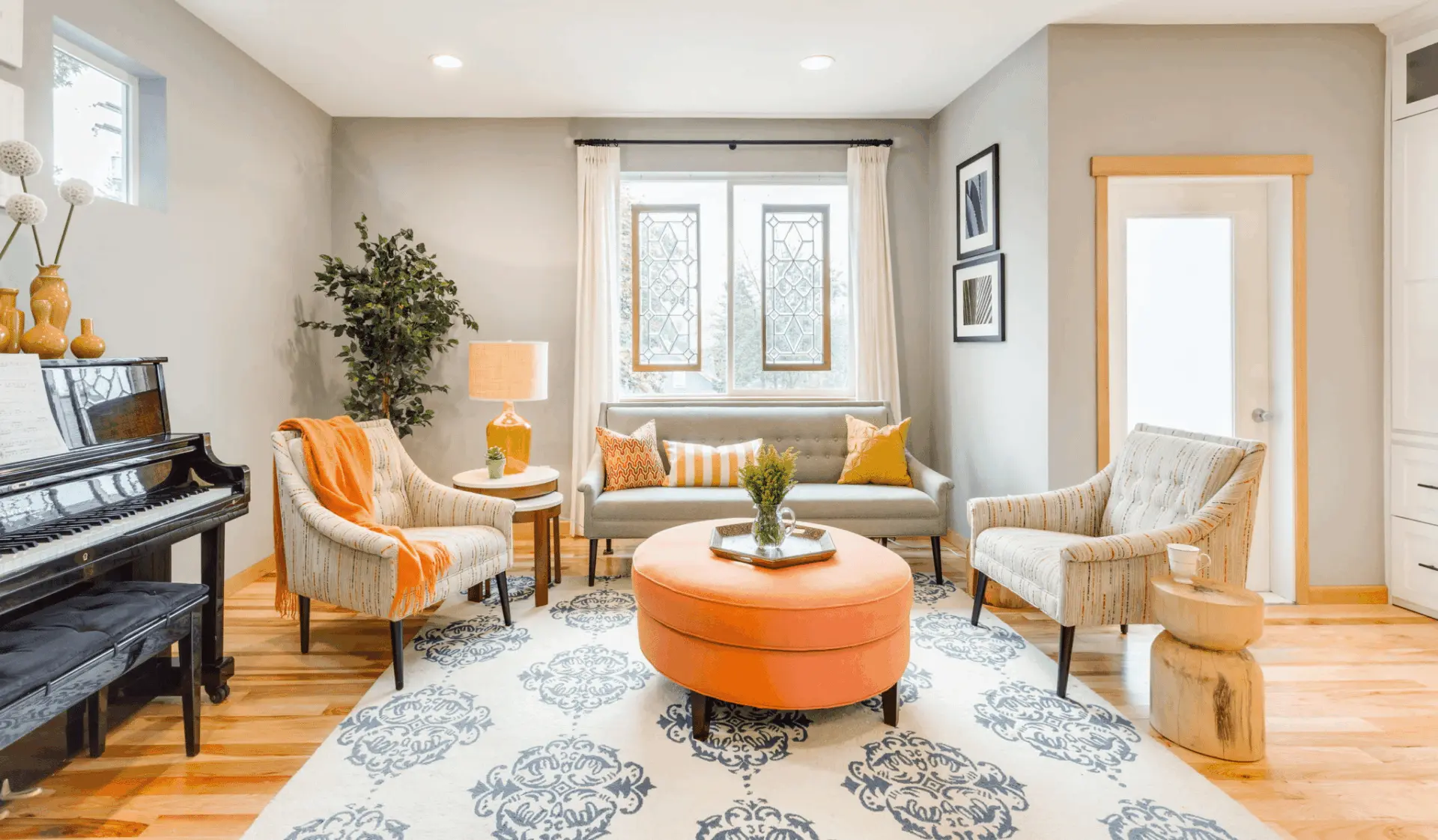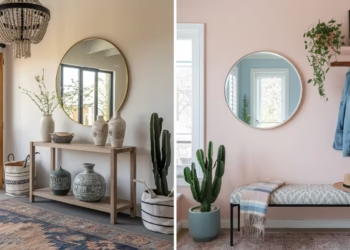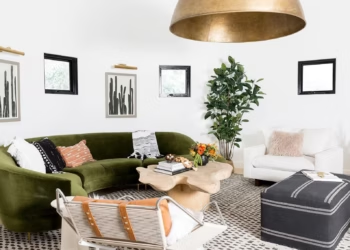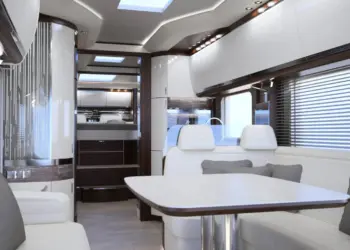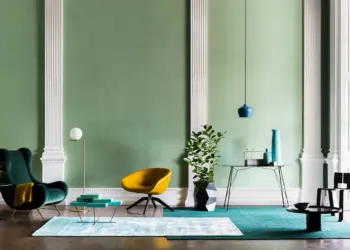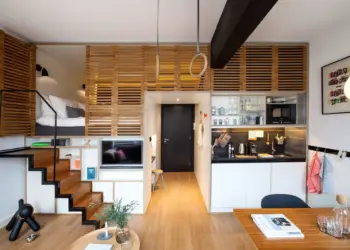Interior design is more than just decorating a space; it is a meticulous art that revolves around the understanding and application of various design principles. From achieving harmony and balance to emphasizing focal points and establishing rhythm, interior design principles play a crucial role in creating visually appealing and functional living spaces that resonate with the occupants’ lifestyle and aesthetic preferences. Let’s delve into the fundamental Principles of interior design that form the backbone of successful interior design.
Table of Contents
Understanding the Importance of Principles of interior design
Interior design principles serve as the fundamental guidelines that help designers create well-balanced and visually captivating interiors. By adhering to these principles, designers can effectively manipulate design elements to create a cohesive and harmonious space that exudes a sense of aesthetic appeal and functional efficiency. Let’s explore some of these fundamental principles in detail.
Harmony and Unity: Principles of interior design
Harmony and unity are central to achieving a visually coherent and pleasing interior space. By integrating complementary design elements, colors, and textures, designers can create a harmonious and unified environment that promotes a sense of visual balance and aesthetic consistency.
Balance in Design: Principles of interior design
Balance is essential for maintaining a sense of equilibrium within an interior setting. By incorporating symmetrical or asymmetrical balance, designers can distribute visual weight effectively, ensuring that the space feels well-proportioned and visually appealing.
Focal Points and Emphasis: Principles of interior design
Focal points and emphasis direct the viewer’s attention toward specific design elements or architectural features. By strategically highlighting key design components, designers can create a focal point that serves as the visual centerpiece of the room, elevating the overall aesthetic appeal and design impact.
Rhythm and Repetition: Principles of interior design
Rhythm and repetition contribute to the visual flow and continuity within a space. By integrating repetitive design patterns or transitional elements, designers can establish a rhythmic visual sequence that enhances the spatial dynamics and creates a sense of movement within the room.
Scale and Proportion: Principles of interior design
Scale and proportion are crucial for managing the dimensions of various design elements within a space. By carefully selecting and sizing furniture and decor, designers can maintain proportional balance and ensure that each element complements the overall spatial configuration.
Exploring the Principles of interior design in Detail
Harmony: Creating Visual Cohesion
Creating visual harmony involves the seamless integration of colors, textures, and design elements to establish a cohesive and visually appealing interior environment. By blending complementary hues and textures, designers can foster a sense of unity and aesthetic balance within the room.
Blending Colors and Textures
Incorporating a harmonious color palette and a diverse range of textures allows designers to create a visually engaging and emotionally stimulating environment that reflects the occupants’ personality and design preferences.
Consistency in Design Elements
Maintaining consistency in design elements, such as furniture styles, lighting fixtures, and decorative accessories, enables designers to establish a well-aligned and visually unified space that resonates with the designated design theme and style.
Balance: Achieving Visual Equilibrium
Achieving visual balance within an interior setting involves the careful distribution of visual weight and the strategic arrangement of design elements to create a sense of equilibrium and aesthetic stability.
Symmetrical and Asymmetrical Balance
Designers can implement symmetrical or asymmetrical balance to establish a well-proportioned and visually balanced interior layout that accentuates the room’s architectural features and design focal points.
Visual Weight Distribution
Balancing visual weight through the strategic placement of furniture, decor, and architectural elements helps designers create a well-structured and visually captivating space that promotes a sense of spatial harmony and design coherence.
Focal Points: Directing Attention
Directing attention to specific design elements or architectural features allows designers to create a focal point that serves as the visual centerpiece of the room, enhancing the overall design impact and aesthetic appeal.
Highlighting Key Design Elements
By accentuating key design elements, such as artwork, statement furniture pieces, or architectural details, designers can establish a focal point that captures the viewer’s attention and adds a layer of visual interest and depth to the interior space.
Creating Accent Pieces
Incorporating accent pieces, such as decorative lighting fixtures, accent walls, or curated decor items, enables designers to create a focal point that adds a touch of character and personality to the overall interior design composition.
Rhythm: Establishing Visual Flow
Establishing visual rhythm within a space involves the strategic integration of design patterns, transitional elements, and sequential design features to create a sense of visual movement and spatial continuity.
Patterns and Sequences
By integrating repetitive patterns, geometric motifs, or sequential design elements, designers can establish a rhythmic visual flow that guides the viewer’s gaze and creates a dynamic and engaging interior setting.
Transitional Design Elements
Incorporating transitional design elements, such as open floor plans, connecting pathways, or transitional decor pieces, allows designers to establish a smooth and seamless transition between different interior zones, fostering a sense of spatial continuity and visual fluidity.
Scale and Proportion: Managing Dimensions
Managing the scale and proportion of various design elements within a space is essential for creating a well-balanced and proportionate interior layout that maximizes spatial efficiency and aesthetic appeal.
Sizing Furniture and Decor
Selecting appropriately sized furniture and decor items in proportion to the room’s dimensions helps designers create a well-structured and visually pleasing interior layout that optimizes spatial utilization and functional comfort.
Maintaining Proportional Balance
Maintaining proportional balance through the strategic placement of furniture, lighting fixtures, and decorative accessories enables designers to establish a spatial equilibrium that enhances the room’s visual appeal and fosters a sense of proportional harmony within the designated space.
Implementing Interior Design Principles
Implementing interior design principles involves the application of these fundamental guidelines in various design contexts, ranging from specific design styles and spatial configurations to do-it-yourself (DIY) projects and interior renovations.
Applying Principles in Different Design Styles
Adapting interior design principles to different design styles, such as modern, traditional, minimalist, or eclectic, allows designers to create customized and personalized interior settings that reflect the unique design aesthetics and preferences of the occupants.
Designing for Specific Spaces
Designing for specific spaces, including living rooms, bedrooms, kitchens, and bathrooms, requires the thoughtful integration of interior design principles to create functional and aesthetically appealing environments that cater to the occupants’ lifestyle needs and design requirements.
Integrating Principles in DIY Projects
Integrating interior design principles in do-it-yourself (DIY) projects and home renovations enables homeowners to explore their creative potential and design acumen, allowing them to personalize their living spaces and infuse their unique design sensibilities into the overall interior composition.
In essence, the principles of interior design serve as the cornerstone of successful interior compositions, enabling designers to create visually captivating and functionally efficient living spaces that reflect the occupants’ lifestyle preferences and design aspirations. By understanding the significance of harmony, balance, focal points, rhythm, and scale in interior design, designers and homeowners alike can embark on a creative journey that celebrates the artistry of spatial transformation and design innovation, fostering a profound appreciation for the transformative power of well-executed interior design principles.
FAQs
How do interior design principles contribute to a well-balanced living space?
Interior design principles contribute to a well-balanced living space by providing a set of fundamental guidelines that help designers create visually appealing and functionally efficient interiors, fostering a sense of spatial harmony and aesthetic balance within the room.
What are the 7 principles of interior design?
The 7 principles of interior design include unity, balance, rhythm, emphasis, scale and proportion, harmony, and contrast, which collectively guide the creation of aesthetically pleasing and functional interior spaces.
What are some common mistakes to avoid when applying interior design principles?
Some common mistakes to avoid when applying interior design principles include overstuffing the room with furniture, neglecting the importance of lighting, disregarding the spatial flow and circulation, and overlooking the significance of color coordination and texture integration within the interior setting.
How can I personalize my interior design while adhering to fundamental design principles?
You can personalize your interior design by incorporating personalized decor items, integrating meaningful artwork and memorabilia, experimenting with different color palettes, and infusing your unique design sensibilities and preferences into the overall interior composition, ensuring that the space reflects your personality and lifestyle.
What role does spatial planning play in the effective implementation of interior design principles?
Spatial planning plays a pivotal role in the effective implementation of interior design principles by enabling designers to optimize spatial efficiency, establish functional zoning within the room, and create a well-structured and visually appealing interior layout that promotes ease of movement and spatial accessibility.
What are elements and principles of interior design?
The elements and principles of interior design encompass various fundamental components such as color, texture, pattern, scale, balance, emphasis, and unity, which are essential for creating well-designed and visually appealing interior spaces.
How can I create a cohesive interior design composition using a combination of design principles and elements?
You can create a cohesive interior design composition by integrating complementary design elements, establishing a consistent design theme and style, fostering visual harmony and balance, and creating a well-aligned spatial configuration that reflects a seamless fusion of design principles and creative design elements, fostering a sense of visual coherence and aesthetic unity within the interior setting.
What are the 5 principles of design in interior design?
The 5 principles of design in interior design involve harmony, rhythm, emphasis, balance, and proportion, which help to create cohesive and visually appealing interior compositions.
What are the principles of interior design drawing?
The principles of interior design drawing encompass concepts such as line, shape, form, space, texture, color, and light, which form the basis for effectively communicating design ideas and concepts through drawings.
